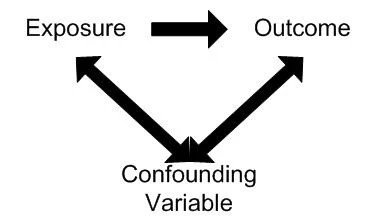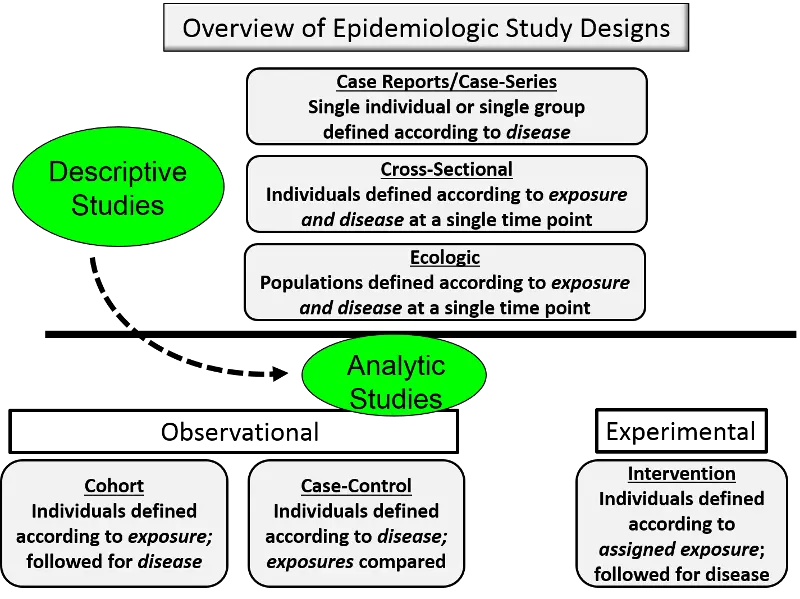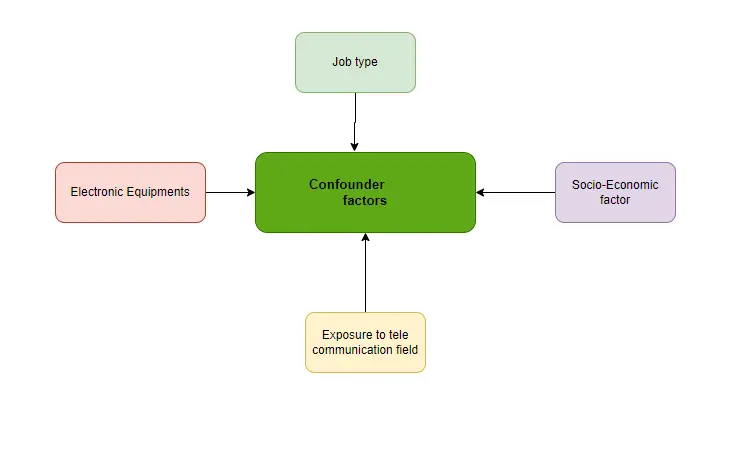Rapid Assignment Help delivers excellence in education with tailored Assignment Help, supporting students to achieve their best.
The major purpose of this Danish cohort research study was to evaluate the use of mobile phones to increase the chances of brain tumours in the population. For conducting this research the researchers took the participants who were living in Denmark, and their age below 30. All the participants were born after 1925. The researchers divided the participants into 2 groups phone subscribers and non-subscribers of phones before 1995. The Danish cancer register identified the chances of tumours in the central nervous system. In their research, it has been identified that from 1990 to 2007, among 358403 mobile phone subscribers 10,729 subscribers were affected by central nervous system tumors. Both male and female subscribers had identified with central nervous system tumours. For those subscribers who used mobile phones for 13 years or more than they have the incidence ratio was 1.03, for men it was 0.91 and for females, it was 0.41 to 2.04. The researchers divided the brain tumour incidence ratio into two parts for the respondents who used phones for ten years or more than 10 years. The ratio of males in brain tumours ranges from 0.85 to 1.26. The researchers investigated that women with glioma brain tumours were 1.04, whereas those females with meningioma showed 0.93. This research paper has not collected any evidence about the relation of the risk of brain tumours with the number of years of a participant’s mobile use. In conclusion, this comprehensive investigation did not discover any specific evidence linking mobile phone use to an increase the central nervous system tumours. However, researchers also stated that it's important that there is still study being done in this field and future investigation will provide more information about this research.
Key points of the research: Central nervous system, Tumor, glioma, meningioma, use of mobile phone.
There are different design strategies that may use to reduce the impact of chances in epidemiological research. First, use an accurate sample size that will help to decrease the degree to which variability chance may be addressed for the result observed in the study. Extended the duration of the research study that will be helpful for research (Klemm, et al. 2020). The researchers may measure uncertainty and evaluate the importance of their research paper findings by Performing accurate statistical tests and confidence intervals calculations help to lessen the influence of the random variation on study conclusions.

Figure 1: Epidemiological studies impact
Evaluating the influence of chance is essential in epidemiological research in order to differentiate between correlation and random variations. Generally, statistical techniques are used. The aim of the epidemiological study is to find the connection between different variables (use of mobile phones) and specific population health outcomes. Statistical results are used to evaluate the result (Akhavan, et al. 2019). The most popular strategies are testing theories. To determine the findings of the research P values are calculated. A relationship is less likely to be the result of chance when the value is less than 0.05. Confidence intervals the another tool, this provides a range of values. A greater CI range indicates more uncertainty and a lower CI suggests a more precise value. For this statistical analysis accurate sample size plays a critical role. The epidemiological studies involve p-values, hypothesis testing, sample size consideration and confidence intervals.
Get assistance from our PROFESSIONAL ASSIGNMENT WRITERS to receive 100% assured AI-free and high-quality documents on time, ensuring an A+ grade in all subjects.

Figure 2: Analysis of epidemiological studies
The researchers conducted a cohort study with a number of mobile phone users and its relation to brain tumours. The large sample size decreases the impact of random variation and enables more reliable factors. To identify the uncertainty range the researchers calculated “confidence intervals” (Wang, et al. 2020). The researchers acknowledged that there may be some variation in the result due to the chance of tumours, but the statistical analysis and the large dataset help to allow a more accurate evaluation of the potential risk of central nervous system tumours associated with mobile phone use.
This section demonstrates the key result of the research paper which is the risk of tumours in the central nervous system in relation to the long-term use of mobile phones.
Null hypothesis
The Null hypothesis for this research paper, the researchers set is that there is no association of risk of central nervous system tumours with the long-term use of mobile phones. It has been noticed after the investigation that those participants used mobile phones for 13 years or more than 13 years the incidence rate ratio for men was 1.03 whereas the women was 0.91 (Colucci-D’Amato, et al. 2020). Those participants used mobile phones for 10 years or more than 10 years, the researchers divided the participants into 2 groups glioma of CNS tumours and meningioma of CNS tumours. The researchers have identified for men the incidence ratio was 1.04, for female glioma CNS tumors range from 0.57 to 1.42 and for meningioma the range was 0.46 to 1.87. These incidence rate ratios are close to 1, which indicates no important difference in the risk of the central nervous system for using long-term mobile phones users company to non-users.
This occurs when there is a systematic difference between the characteristics of the participants who are performed in this research study (mobile phone subscribers) and those who are not (Not subscribers of mobile phones), it is called selection bias. For this research, the chosen participants lived in Denmark. Participants age equal or greater than 30 and they were born after 1925 (Parodi, et al. 2019). The researchers also subdivided the participants
group into 2 groups mobile phone subscribers and before 1995 non-mobile phone subscribers.
The researchers collected information from 358403 participants, and it was identified among them 10729 suffered from CNS tumours.
It generally occurs when the exposure timing of the research and the outcome is established incorrect format. This research study was an effort to decrease potential reverse causation bias by defining the participant's mobile use time. This also evaluates the symptoms of the disease and the mobile phone use time of the respondents.
To recognise the risk of tumours in the CNS among mobile phone subscribers the researchers held a cohort study. For conducting this research the researchers took the participants from Denmark who were aged 30 or greater than 30. The participants were born after 1925. The participants group were subdivided into 2 groups: mobile phone subscribers and non-mobile phone subscribers before 1995.
The major outcome of this research was identified from the complete Danish Cancer Register. The researchers recorded the risk of tumours of the CNS due to long-time use of the mobile phone. For their researcher, they could not specifically identify participants' sex for the incidence ratio, their age, education and income level (Hettiarachchi, et al. 2019). This section provides the information which the researchers got from the research paper. From 1990 to 2007 the research held on 358403 participants who had mobile subscriptions. It has been identified that 10729 participants had suffered from tumours of CNS. There was no specificity in men and women in this incidence. For those participants who used phones longest time or those who had mobile subscriptions of mobile 13 years or longer, for men incidence ratio was 1.03 and for female’s incidence ratio was 0.91. Those participants had mobile subscriptions for 10 years or longer than 10 years, they are subdivided into 2 sections: Glioma and meningioma. The rate of female glioma was 1.04 and women with meningioma were 0.90.
This outcome provides a deep understanding of the harmfulness of using mobile for a long period of time. The researchers also stated that to require more information it will require more investigation in future on this field.
The reverse causation bias is the potential source of the study that investigated the association of using mobile phones and its relation to increasing the risk of tumours in CNS. For conducting this research the potential reverse causation bias is when participants have early symptoms of tumors including neurological disorder, headache etc. These symptoms started due to the use of a mobile phone long period of time and this might cause risk assessment to be inflated.
The authors have addressed the potential biases that are described in the following section:
The authors defined the participant’s mobile usage time and their subscription period. The 1st year subscription of mobile phones was not considered by the researchers when they calculated the exposure period, thus reducing the reverse causation bias (Jiang, et al. 2021). To mitigate this potential bias, the researcher excluded people who suffered cancer within a year of their mobile subscription. This research paper’s objective was to decrease the effect of reverse causation and produce more reliable findings about the connection between mobile phone use and the risk of developing CNS tumours.
The term confounding describes the misinterpretation of the association between dependent and independent variables because in this case, 3rd variables are independently associated with both the independent and dependent variables (Petralia, et al. 2020). The relationship between independent and dependent variables described the way through which independent variables felt the impact on the dependent variables.
The role of confounding can be reduced in the design of epidemiological studies in many ways that are described in the following section.
Randomization: The major purpose is random distribution of the cofounder between the epidemiological studies group.
Stratification: Epidemiological studies’s confounders are evenly distributed within each stratum.
Restriction: Initially restrict entry to epidemiological study of individuals with such confounding factors like risk bias of the study.
Multivariate analysis: It only works when the researcher identifies the factors of epidemiological study and its measures confounders.
Matching: The epidemiological studies match groups, individuals and the equal distribution of the confounders.
Confounding is a crucial concept in epidemiological studies. The effect of confounding was assessed by investigating the association between the research exposure and the outcome of health considering the potential confounding factors (Haldbo-Classen, et al. 2020). Multivariable regression analysis helps to control the confounders by including these factors in the covariates model. The researchers determine the degree to which confounding may be influencing the observed relation by comparing the strength and association direction before and after adjustment for potential confounders. The sensitivity and stratification method helps to examine the impact of mobile phone usage on the outcome of brain tumours among the participants.
The researchers have created different factors that help to address the role of confounding of this research.
Socioeconomic factors: The researchers some individual-level data as socioeconomic indicators that are participants' education, income etc, which were utilised for potential confounding factors in this research paper. These factors also allowed the researchers to identify subgroups with less confounding factors that depend upon income rate and higher education etc.
Comparison: The researchers compared the study’s outcome in different subgroups including men and women which helps to evaluate the differential confounding factors.
Cancer occurs due to smoking: The researchers evaluate the risk of smoking-related cancer and the risk of CNS tumours due to long-term use of mobile phones (Ismael, et al. 2020). This research helped to address the potential confounding effects of smoking, these are the main risk factors of the cancer.
Temporal analysis: The researchers use the time of using mobile phones as the temporal analysis factor. According to the time limit, they investigated the impact of mobile phones on the risk of growing tumours.
The potential confounder the researchers have not addressed in their research paper was occupational exposure in the electromagnetic field. This could significantly vary among individuals and this is related to the participant's job types, those people working in the telecommunication industry have greater exposure to electric equipment than the other participants. This electromagnetic radiation helps to grow the tumours. These factors act as confounder, that might affect the risk of tumours in the CNS. To address this potential confounder, Future research studies should consider collecting data based on occupational exposure that helps to understand the potential impact on the risk of CNS tumours.

Figure 3: Diagram of Confounder factors
To design the case-control study to recognise the risk of tumours in CNS associated with the use of mobile phones.
The identifying cases are
Strength
Weakness
For collecting the research data in this field the researchers will get information from the cancer hospitals. This research will not specify any sex (Tandel, et al. 2019). For collecting the information provide the first priority of the participants’s socio-economic status, their income level, their occupation, their education level, and their behaviours, and the use of mobile phone time etc.
Strength
The collection of data according to this manner helps to investigate the actual factors which is responsible for the occurring tumours in CNS (Terstappen, et al. 2021).
Weakness
In case, all the participants will not provide accurate data then it is difficult to get appropriate outcomes from the research.
The case-control studies have several advantages compared to cohort design. Case-control studies are a comparatively easy, inexpensive method and quick also. This research procedure helps to appropriate for investigating the research’s outbreak knowledge (Suh, et al. 2020). This study aslo help to identify rare disease and their causes in the easiest way. Investigating the research according to a case-control study allows multiple exposures and the risk factors that are associated with the risk.
The case-control studies are subjected to selection bias. It has been noticed sometimes the selection bias factors are “inefficient for the rare exposure”. In most cases it has been noticed that the researchers can include unequal numbers of case-control like 2:1 and 4:1 (Mushroor, et al. 2020). These increase the study’s power. The factors which are included in this research are “potential for recall bias”.
The paper stated how mobile technology to influence malignancies tumours. In order to create the research methodology, a panel of specialists was invited to the 2019 Annual Meeting of the Multinational Association of Supportive Treatment in Cancer to discuss the most recent advancements in mHealth application to cancer treatment (Chan, et al. 2020). They selected the following areas of focus for mHealth in cancer treatment via lectures, case studies, and discussions: providing survivorship care, physical oncology, and self-management assistance. Two distinct aspects were emphasized: tackling technological inequalities among diverse communities and ethical problems.
The findings imply that mHealth has the ability to boost survival care, encourage exercise in those with cancer, and strengthen the independence of patients. Differences in technology and moral issues like privacy and security present difficulties, though. By highlighting the significance of customizing mHealth programs to varied groups and dealing with concerns regarding ethics, this study contributes to the body of current evidence. It draws attention to possible advantages of mHealth in the treatment of cancer while simultaneously emphasizing the necessity of cautious application and additional study to guarantee both safety and effectiveness.
The Frei study used specific objective and register-based data. This is a cohort study based on mobile phone subscribers and the risk of CNS tumours, this has a high level of external validity. For collecting the research information the data have been collected from the healthcare centers and this was conducted in Denmark (Miller, et al. 2020). This provides the nation with a healthcare system. The methodology of this study helps to improve the external validity of the different factors.
The implication of this research paper provides a good example of the factors that help to increase the tumour's symptoms (Jones, et al. 2019). Through this investigation, it will be helpful for the researcher to know the factors which are cancer-causing stimuli and also provide awareness to the future generation about the carcinogenic components also.
Reference list
Journals
1.0 Introduction - How Effective Is Pulmonary Rehabilitation In Improving The Quality Of Life Among Copd Patients? Say goodbye...View and Download
Introduction - Contemporary Issues In Accounting Part A Take the stress out of your academic journey with our professional...View and Download
QUESTION 1 Enhance your academic performance with Online Assignment Help. Get expert guidance, well-researched content, and...View and Download
CACHE Level 3 Diploma in Early Years – Unit 1 This section provides complete solved work for CACHE Level 3 Diploma in...View and Download
QUESTION: 4 Get timely, well-researched help with your Online Assignment Help, ensuring you stay on top of your...View and Download
Question 1: Regulatory framework and financial reporting standards Make your assignments stand out with our...View and Download
